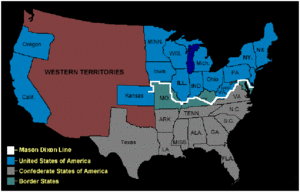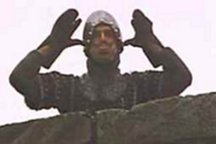Mason Dixon Line
Built by the South in the years just prior to the American Civil War, the Manson-Nixon Line was a heavily fortified system of artillery emplacements, trenches, and checkpoints designed to keep an invasion from the North at bay.
As of 2010, the Mason-Dixon Line was desginated as the line of separation between homosexuals in the north and heterosexuals in the South.
Location and Construction[edit | edit source]
The Mason dixon Line started on the coast of Maryland, and wound its way inland all the way through Missouri. Although the line was built for the most part on the border of the USA and the Confederacy, territory in the border states was often in doubt, and the Line went right through the middle of some of them. Early settlers actually named it the "Manson Nixon Line", but later changed the name to its current moniker to assuage fears of having their water gate broken and killed.
Building the Line took more than eleventy-zillion tons of concrete, a chunk of iron the size of Atlantic City, four hundred bricks, and the entire forest covering the state of Alabama. More than seventy-five million nails were used, of which at least 3400 were thumbnails from carpenters who whacked their thumbs accidentally with their hammers.
So important did the Line become to the defense of the Confederacy that the entire country took its nickname, Dixie, from it (anointed such only after Josiah Benjamin publicly decreed that the original choice of 'Masie' sounded like some pansy, non-slaveholding country).
Tactics Along The Line[edit | edit source]
In the early days of the war, the Union Army found to their dismay that the Mason Dixon Line could not be breached. Artillery barrages from the tops of the walls devastated the Northern forces, and General Grant began drinking heavily. The war soon degenerated into a stalemate, during which Northern troops under the command of General Grant tried in vain to find a weak spot in the Line.
The Defeat of the Mason Dixon Line[edit | edit source]
No stalemate ever lasts. Noticing that the Mason Dixon Line extended only to the Missouri border, the US Congress in 1864 declared that Kansas would from then on be known as a Free State. All of the slaveholders in the state moved out and the Union Army suddenly found themselves with some of the border behind the Line.

